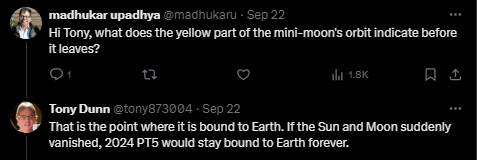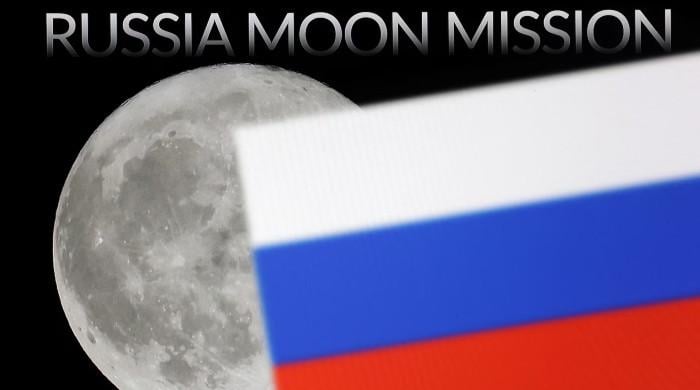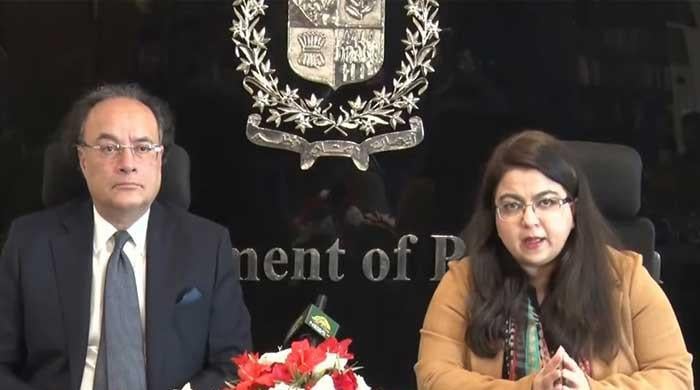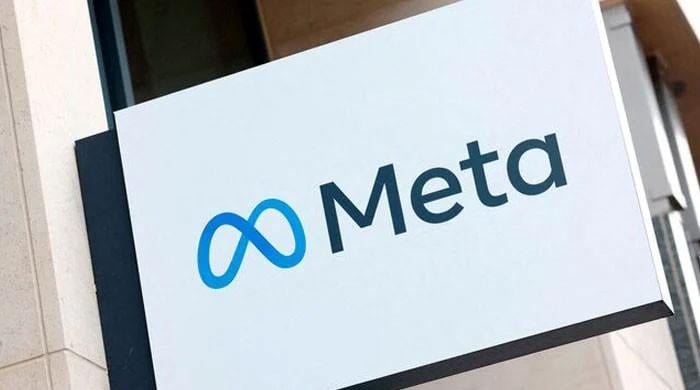A mini-moon is coming: Earth set to welcome a temporary companion
Guest moon is expected to enter our celestial neighborhood on Sept 29, where it may accompany our Moon for about two months
September 28, 2024

Ever wondered what would happen if Earth had two moons? Well, brace yourself to be amazed, as a "mini-moon" is on its way.
Earth is going to attract an asteroid into its orbit, which scientists are dubbing a "mini-moon." However, this asteroid's "crush" on our planet will not last more than a couple of months.
And don't get too excited about this news, because it's not something the naked eye can see. Only a special kind of telescope can catch sight of this scientific phenomenon, which will provide a valuable lesson to those fascinated by celestial objects.
The asteroid, called 2024 PT5, meets certain criteria to be classified as a mini-moon; otherwise, there is a stark difference between it and our beloved Moon.
Scientists say the celestial object is as large as a school bus, and God forbid, if an asteroid slightly larger than this size hits us, it could wipe out an entire city from the face of the Earth. But there’s no need to fret, as this isn’t going to happen, at least according to solid scientific calculations.
The celestial guest, expected to enter our cosmic neighbourhood on September 29, may accompany Earth's natural satellite for about two months.
It should be noted that dinosaurs went extinct after an asteroid about ten kilometres (much larger than the one under discussion) in diameter struck Earth over 66 million years ago.
Let’s delve deeper into understanding this once-in-a-blue-moon event with the Director of Space & Atmospheric Sciences at SUPARCO Karachi, Muhammad Ayyaz Ameen.
"The asteroid is about 11 meters (0.011km) in length as per initial estimate," Ayyaz told Geo.tv, adding, "To observe this asteroid one needs to have a telescope of more than one meter aperture with optical aid such as CCD (charged coupled device) — a special type of camera."
The SUPARCO director rejected the notion that it could pose any threat to the planet or its inhabitants. "No, it is not going to be a threat," he said.
The official said the distance between Earth and Moon was around 400,000km and the asteroid will travel farther away than this.
He said that the hodophile planetoid will temporarily enter a horse-shoe-shaped orbit around Earth before continuing its journey away, adding that this asteroid might reappear in 2055 as well. "In the meantime, more objects could be drawn in and captured by Earth's gravity," he explained.

Ameen said such occurrences had happened earlier as well.
"2006 RH120, a small asteroid, was caught by Earth's gravity and orbited our planet from 2006 to 2007. It was one of the first known instances of a temporary moon being documented.
"Then, 2020 CD3 was discovered on February 15, 2020, and it escaped Earth’s gravity on May 7, 2020. It came under the influence of Earth's gravity in 2016-17.
"Meanwhile, the 2022 NX1 asteroid made two visits as a mini-moon, first in 1981 and again in 2022, demonstrating that some asteroids can return to Earth's vicinity multiple times,” Ameen said.
In response to a query regarding the significance of the "mini-moon" phenomenon in cosmic science, the SUPARCO official said the study of such moons was essentially the study of Near-Earth Orbits (NEOs).
"It helps in understanding the past and future of the universe. Future exploration of the universe using space missions is based on the knowledge gained about the dimensions, positions, and formations of such objects," he said.
According to Ameen, this scientific event enhances learning in many ways, from understanding the formation of such bodies to testing technologies in space.
"This provides future research opportunities. The destruction of NEOs paves the way for the safety of the planet in the future. Additionally, the utilisation of resources on NEOs is a topic of interest for all space actors."
Astronomers believe that mini-moons about one meter or smaller are often attracted to Earth, but they are difficult to detect due to their size.
They can be found by projects specifically searching for asteroids near the planet. The 2024 PT5 itself was discovered by the Asteroid Terrestrial-impact Last Alert System (ATLAS), an ongoing project designed to search for asteroids.
Let’s not forget that with a mean diameter of 3,475 km, the Moon is less than a third the width of Earth. To put it simply, if Earth were the size of a nickel, the Moon would be roughly the size of a coffee bean.









